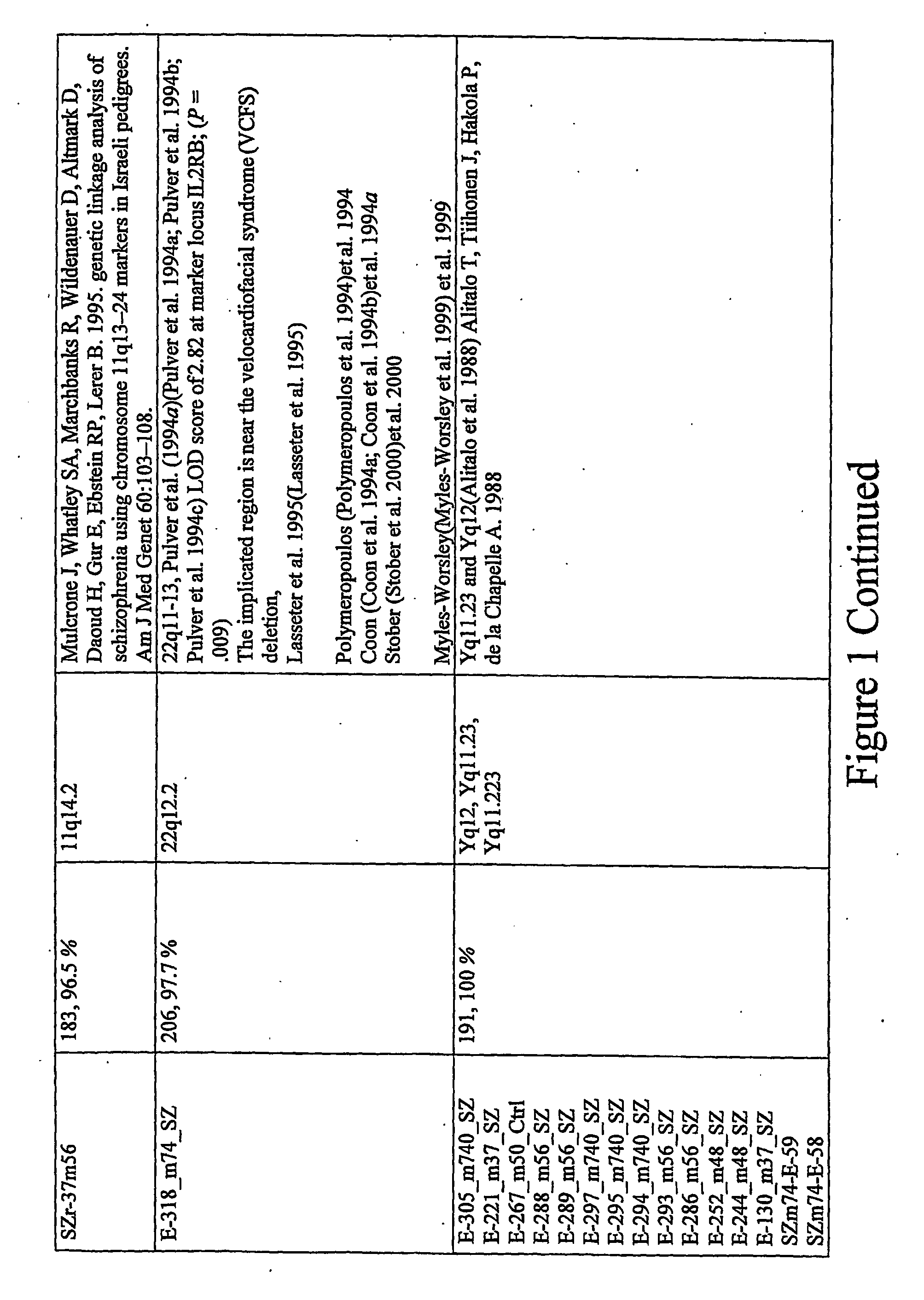Detection of epigenetic abnormalities and diagnostic method based thereon
a technology of epigenetic abnormalities and diagnostic methods, applied in the field of diagnosis and treatment, can solve the problems of time-consuming and daunting task of identifying such a large number of genes, and inability to make such a large number of genes, and achieve the effect of reducing the number of genes and reducing the number of cancers
- Summary
- Abstract
- Description
- Claims
- Application Information
AI Technical Summary
Benefits of technology
Problems solved by technology
Method used
Image
Examples
example 1
Identification of Loci Having a Hypomethylated Sequence and a Retroelement in Schizophrenia or Bipolar Disorder
[0165] Brain tissues. Prefrontal cortex from post-mortem brains of individuals who were affected with various psychiatric disorders (N=39; age at death [+S.D.] 40+12 yr) and controls (N=9; age at death 48+7 yr) were subjected to analysis. In the affected group, there were 26 males and 13 females, and the controls consisted of 8 males and 1 female. The distribution of psychiatric diagnoses was as follows: 11 bipolar disorder, 9 schizophrenia, 11 non-psychotic depression, and 8 psychosis NOS. The overwhelming majority of the tested samples were from Caucasians, 1 American Black, and 2 Asians (all three affected). Brain tissues were kindly provided by the Stanley Foundation Brain Bank.
[0166] Methods. DNA samples were extracted from the brain tissues using a standard phenol-chloroform extraction technique. Before the digestion of genomic DNA with a methylation sensitive restr...
example 2
Identification of Strong Correlation Between Huntingdon's Disease and Hypomethylation in a Locus Having a Retroelement
[0181] Brain tissues. Samples from caudate and putamen (the brain regions that are primary sites of pathological changes in Huntington's disease [HD]) of HD patients (N=3; age at death 52+3 yr) and matched controls (n=4; age at death 54+3.5 yr) were analyzed.
[0182] Methods. Same as in Example 1 except for the following details. For the analysis of Alu sequences within the Huntington's disease (HD) gene, primers for two Alu sequences downstream of the (CAG)n / (CTG)n trinucleotide repeat region were synthesized. It is of note that in the HD locus analysis, concrete Alu sequences were investigated, and the designed primers were complementary to the flanking regions of each specific Alu of the HD gene. This approach tested if DNA modification is different in the regions surrounding Alu's within the gene that is known to cause a neuropsychiatric disease. The set of prime...
example 3
Identification of Strong Correlation Between Huntingdon's Disease and Hypomethylation in a Locus Having a Retroelement
[0186] The same experiment as in Example 2 was repeated with 10 HD patients and 10 control subjects (see Table 4). DNA was extracted from cerebellum and striatum samples for each HD patient and control subject.
TABLE 4Data on Huntington Disease patients and control casesBrain #Distribution DxAgeSexPMIB3976H373M23.00B4094H372M12.75B4381H455F24.40B5119H368F17.00B5146H379F16.25B5177H349M25.25B5331Control74M22.50B5077Control67M18.50B3813Control58F20.00B5176Control65F24.25B5113Control74F12.17B5270Control52M22.56B4781H456F9.50B4826H449M16.60B4828H452M18.16B5034H454M20.08B4739Control50M26.50B4751Control54M24.20B4974Control58F14.30B5024Control56M21.33
Where H3 is the preterminal stage of HD
H4 is the terminal stage of HD
PMI is the postmortem interval (time between death and a brain tissue sampling)
[0187] The Alu sequence located ˜4 Kb downstream of the (CAG)n / (CTG)n repea...
PUM
| Property | Measurement | Unit |
|---|---|---|
| Digital information | aaaaa | aaaaa |
| Mass | aaaaa | aaaaa |
| Fraction | aaaaa | aaaaa |
Abstract
Description
Claims
Application Information
 Login to View More
Login to View More - R&D
- Intellectual Property
- Life Sciences
- Materials
- Tech Scout
- Unparalleled Data Quality
- Higher Quality Content
- 60% Fewer Hallucinations
Browse by: Latest US Patents, China's latest patents, Technical Efficacy Thesaurus, Application Domain, Technology Topic, Popular Technical Reports.
© 2025 PatSnap. All rights reserved.Legal|Privacy policy|Modern Slavery Act Transparency Statement|Sitemap|About US| Contact US: help@patsnap.com



